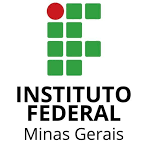REFERÊNCIAS
AL-ALWANI, A. Information technology integration in higher education: A novel approach for impact assessment. International Journal of Emerging Technologies in Learning, 9(6): 32-36, 2014
ALZAHRANI, MG. The Effect of Using Online Discussion Forums on Students’ Learning. TOJET: The Turkish Online Journal of Educational Technology – January 2017, volume 16 issue 1.
BACICH, L; TANZI NETO, A; TREVISANI, FM. Ensino Híbrido: Personalização e tecnologia na educação. Porto Alegre: Penso, 2015.
BAUERLEIN, M. The dumbest generation: How the digital age stupefies young Americans and jeopardizes our future (or, don’t trust anyone under 30). London, England: Penguin, 2008.
CHAN, WTY & LEUNG, CH. The Use of Social Media for Blended Learning in Tertiary Education. Universal Journal of Educational Research 4(4): 771-778, 2016.
CHRISTENSEN, R; KNEZEK, G. Relationship of mobile learning readiness to teacher proficiency in classroom technology integration. 13th International Conference on Cognition and Exploratory Learning in Digital Age, 2016.
DABBAGH, N. & KITSANTAS, A. Personal learning environments, social media, and self-regulated earning: A natural formal for connecting formal and informal learning. Internet and Higher Education, 15(1): 3-8, 2012.
DABBAGH, N., & REO, R. Impact of Web 2.0 on higher education. In D. W. Surry, T. Stefurak, & R. Gray (Eds.), Technology Integration in Higher Education: Social and Organizational Aspects (pp. 174–187). Hershey, PA: IGI Global. 2011.
DESIMONE, L. Improving impact studies of teachers’ professional development: Toward better conceptualizations and measures. Educational Researcher, Vol. 38, No. 3, pp 181-199, 2009.
DRON, J. Control and Constraint in E-Learning: Choosing When to Choose. Hershey, PA: Idea Group, 2007.
GAMBARI, AI et al. Effectiveness Of Blended Learning And ELearning Modes Of Instruction On The Performance Of Undergraduates In Kwara State, Nigeria. Malaysian Online Journal of Educational Sciences 2017 (Volume5 - Issue 1)
GROSCH, M et al. Which media services do students use in fact? Results of an international empirical survey. Procedia - Social and Behavioral Sciences, 141: 795-806, 2014.
HALVERSON, LR., et al. A thematic analysis of the most highly cited scholarship in the first decade of blended learning research. The Internet and Higher Education, 20, 20-34, 2014.
HAZARI, S., NORTH, A., & MORELAND, D. Investigating pedagogical value of wiki technology. Journal of Information Systems Education, 20(2): 187–198, 2009.
JA’ASHAN, MMNH. Perceptions and Attitudes towards Blended Learning for English Courses: A Case Study of Students at University of Bisha. English Language Teaching; Vol. 8, No. 9; 2015.
JOHNSON, CC. Educational turbulence: The influence of macro and micro policy on science education reform. Journal of Science Teacher Education, Vol. 24, No. 4, pp 693-715, 2013.
KENNEDY, G., Immigrants and natives: investigating differences between staff and students’ use of technology. In R. Atkinson & C. McBeath (Eds.), Annual Conference of the Australasian Society for Computers in Learning in Tertiary Education (pp. 484-492). Melbourne, Australia: Deakin University, 2008.
LAI, A; SAVAGE, P. Learning Management Systems and Principles of Good Teaching: Instructor and Student Perspectives. CJLT/RCAT Vol. 39(3), 2013.
MORAN, E. Ensino híbrido: personalização e tecnologia na educação. In: BACICH, L; TANZI NETO, A; TREVISANI, FM. Ensino Híbrido: Personalização e tecnologia na educação. Porto Alegre: Penso, 2015.
MOREIRA, JA; FERREIRA, AG; ALMEIDA, AC. Comparing communities of inquiry of Portuguese higher education students: One for all or one for each? Open Praxis, vol. 5 issue 2, April–June, pp. 165–178, 2013.
MUIR, M., KNEZEK, G., AND CHRISTENSEN, R. The power of one to one: Early findings from the Maine Learning Technology Initiative. Learning and Leading with Technology, Vol. 32, No. 3, pp.6- 11, 2004.
PECHENKINA, E; AESCHLIMAN, C. What Do Students Want? Making Sense of Student Preferences in Technology-enhanced Learning. Contemporary Educational Technology, 8(1), 26-39, 2017.
PEERAER, J. & VAN PETEGEM, P. Integration or transformation? Looking in the future of Information and Communication Technology in education in Vietnam. Evaluation and Program Planning, 48: 47- 56, 2015.
PEISACHOVICH, EH. Flipping the Classroom: A Pedagogical Approach to Applying Clinical Judgment by Engaging, Interacting, and Collaborating with Nursing Students. International Journal of Higher Education. Vol. 5, No. 4; 2016
PRENSKY, M. Digital natives, digital immigrants. On the horizon, 9(5), 1-6, 2001.
RAZEP, E. & ABEL, U. Acceptance factors and current level of use of Web 2.0 technologies for learning in higher education: A case study of two countries. International Journal of Advanced Computer Science and Applications, 5(5): 9-14, 2014.
RIDEOUT, VJ., FOEHR, UG., & ROBERTS, DF. Generation M [superscript 2]: Media in the Lives of 8-to 18-Year-Olds. Henry J. Kaiser Family Foundation, 2010.
SMALL, G. & VORGAN, G. Meet your iBrain. Scientific American Mind, 19(5), 42-49, 2008.
SMITH et al., Evaluation of Biomedical Science Students Use and Perceptions of Podcasting. Bioscience Education, v22 n1 p3-15 Jul 2014.
SMITH, SD. & CARUSO, JB. The ECAR study of undergraduate students and information technology, 2010. EDUCAUSE Center for Applied Research (ECAR), 2010.
STAKER, H.; HORN, MB. Classifying K–12 blended learning. Mountain View, CA: Innosight Institute, Inc. 2012. Disponível em: <http://www.christenseninstitute.org/wp-content/uploads/2013/04/Classifying-K-12-blended-learning.pdf>. Acesso em: 28 fev 2017.
THOMPSON, J. Is Education 1.0 Ready for Web 2.0 Students? Journal of Online Education, 3(4): 5, 2007.
UMOH, JB.; AKPAN, ET. Challenges of Blended E-Learning Tools in Mathematics: Students’ Perspectives University of Uyo. Journal of Education and Learning; Vol. 3, No. 4; 2014.
UNESCO. Working paper series on mobile learning: Turning on mobile learning in North America. UNESCO, Paris: 2012.
VALENTE, JA. Blended Learning e as mudanças no Ensino Superior: A proposta da sala de aula invertida. Educar em Revista, Curitiba, Brasil, Edição Especial n. 4/2014, p. 79-97. Editora UFPR. Disponível em: http://revistas.ufpr.br/educar/article/view/38645/24339.
